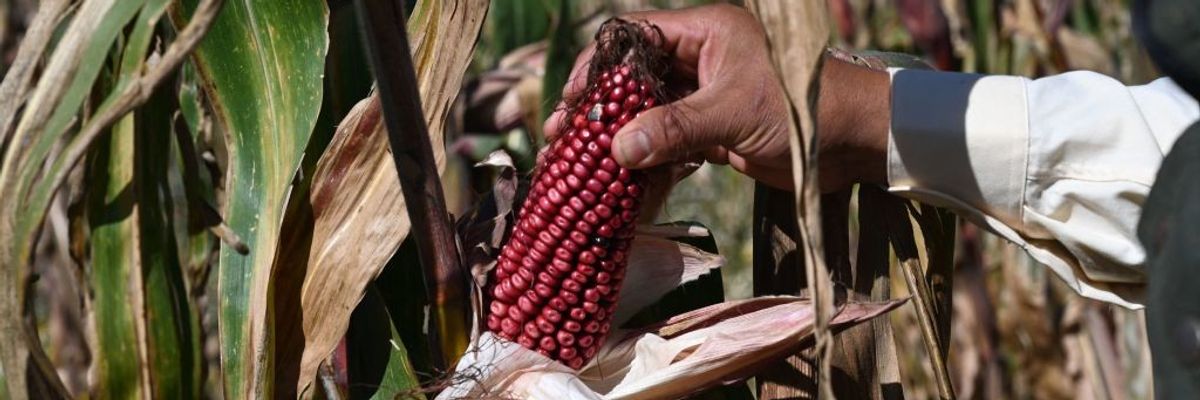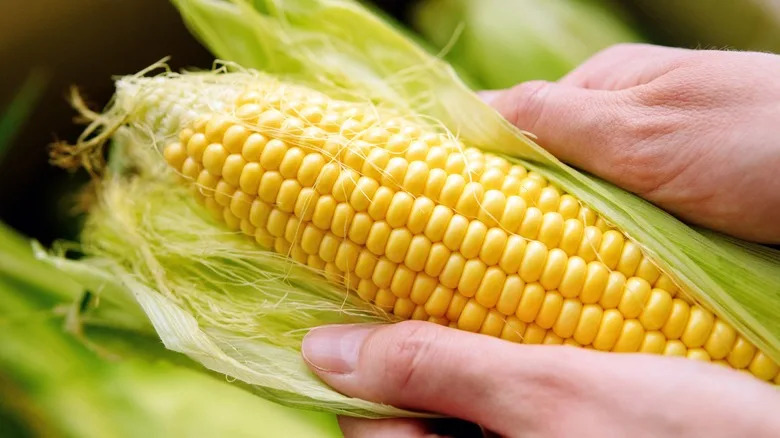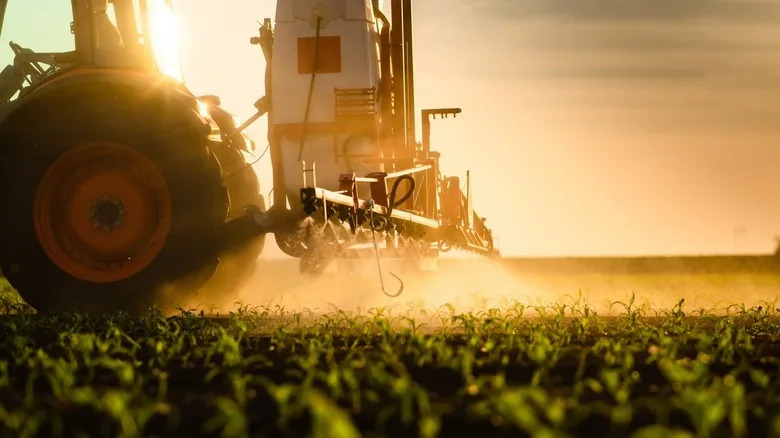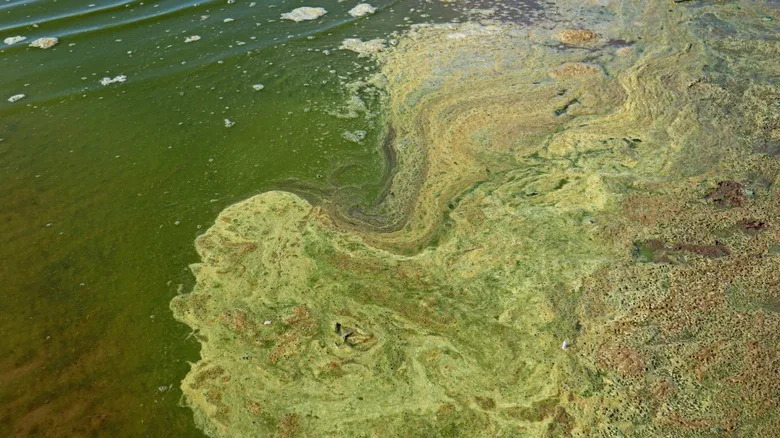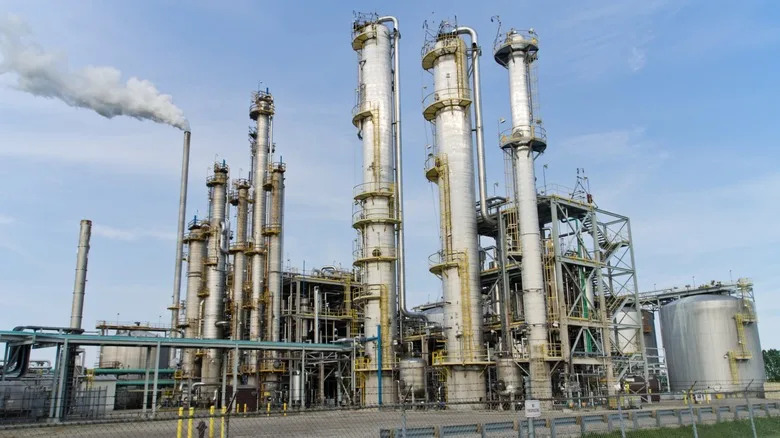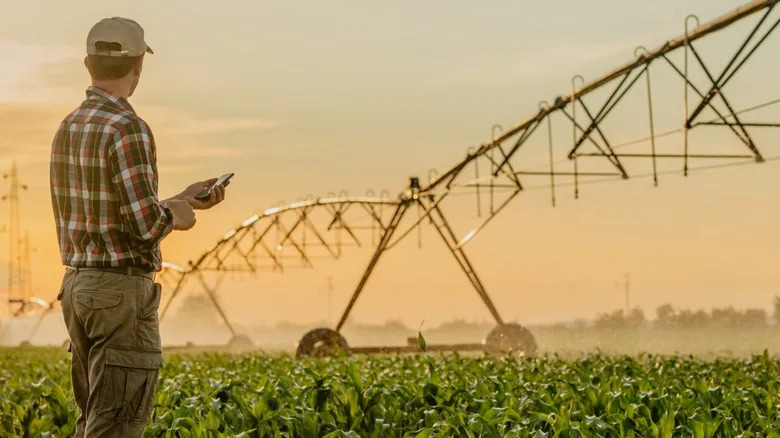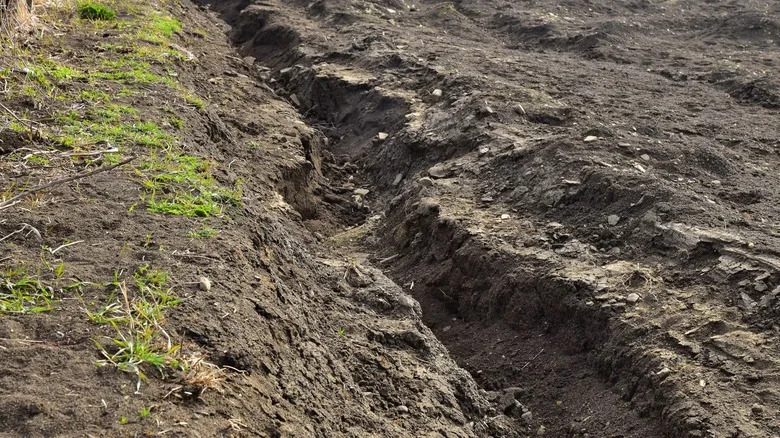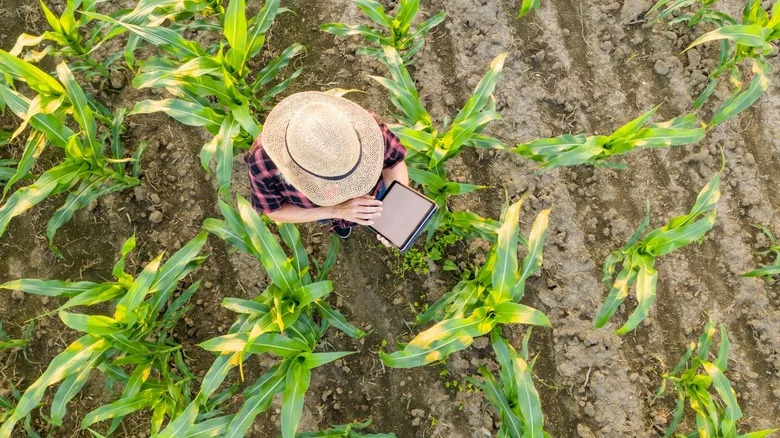The planet is facing multiple severe challenges that require our immediate attention. Putting an end to the dirty and suffocating fossil fuel emissions may be the most significant global priority, but limiting the misuse of water and restoring degraded land are also essential projects.
These two actions could help put the brakes on extreme weather events and slow down mounting losses in biodiversity, biocapacity, and the economy.
The Seeds of Preparedness
Human encroachment, especially in areas rich in biodiversity, has been one of the major threats to the survival of plants and nonhuman animals.
A 2023 report by NatureServe, a conservation group that networks with and analyses the research of more than 1,000 scientists in the US and Canada, puts the biodiversity crisis into perspective.
Their findings are worrisome: 40% of animals and 34% of plants are at risk of extinction in the United States. Many of these species are losing their natural habitats: 41% of ecosystems are threatened by collapse.
“At this moment, species are going extinct faster than any time in human history,” the report stated. “Given limited resources available for land management, conservation, and research, we need to make the most effective decisions to ensure the survival of natural communities. Data should be driving these decisions.”
The repercussions of our thoughtless actions are finally catching up with us. They threaten our existence. The United States is already experiencing natural disasters at an unparalleled scale. “The US experienced 23 separate billion-dollar weather and climate disasters in the first eight months of 2023—the largest number since records began,” according to Axios.
Using resilient native seeds to repair “Earth’s Green Mantle” may help support those Americans who are losing everything due to storms, floods, landslides, or fires. It could offer them a fighting chance to start over and rebuild in a safer spot—for keeps, and not in vain.
What use would reconstruction be if the climate crisis deepens and destroys their homes again? “Without native plants, especially their seeds, we do not have the ability to restore functional ecosystems after natural disasters and mitigate the effects of climate change,” states the report, “National Seed Strategy for Rehabilitation and Restoration.”
To keep the human population sheltered, we can get help from something ancient and fundamental: native seeds, “which have adapted to their local environments over the course of thousands of years,” explained NPR. Sadly, we no longer have enough of them to do even the most urgent repairs. Making sure there will be a sufficient supply is the first task.
In January 2023, the National Academies of Sciences, Engineering, and Medicine (NASEM) released the report “An Assessment of Native Seed Needs and the Capacity for Their Supply.” It leaves no doubt about the dire shortage of native seeds and the urgency of supplying them to restore damaged natural areas.
“A limited supply of native seeds and other native plant materials is a widely acknowledged barrier to fulfilling our most critical restoration needs,” said Susan P. Harrison, a professor at the University of California, Davis, and chair of the committee that wrote the NASEM report.
The document outlines a detailed course of action, covering topics ranging from federal to state and local governments, tribal uses of native seeds, cooperative partnerships, and the problematic situations seed suppliers face. Another critical study called “Collection and Production of Native Seeds for Ecological Restoration” by Simone Pedrini and her colleagues in 2020 offered an excellent analysis of native seed requirements.
The “just-in-time” inventory business model of late capitalism is a fiasco for seeds and seedlings. Cities want to plant many more trees to mitigate extreme heat. The U.S. Forest Service intends to plant 1.2 billion trees between 2022 and 2032 to restore scorched land. But the ample supply of hardy seedlings to do this is not available.
“Seedling production in the northern US fell by more than half between 2012 and 2020, the researchers found,” stated an August 2023 article in Anthropocene. It takes planning and years of careful work to harvest the desired seeds and grow the seedlings. The limited quantities of baby trees found in nurseries usually belong to vulnerable species that will not survive the harsh conditions resulting from extreme weather conditions.
Evolution: The Ultimate Disaster Proofing
The resilient seeds needed are the end-product of a long evolution. Plants have accomplished much since starting on solid ground some 500 million years ago, and they have gained far more experience on how to persist on this Earth than we have. They’ve endured the harshest conditions and have been tested and retested to the limits. Those plant species that made it know how to hold on even when heat, drought, erosion, and other perils will cause other plants to fail. Insects, animals, and humans depend on these plants for sustenance, shelter, and more.
In fact, plants have been essential for all living things in the planet’s history, and their germplasm will be crucial for the future. Humans are the new kids on the block, and our cavalier attitude toward the genetic richness of this inconspicuous and diverse greenery has gotten us into the current dilemma.
Global Boiling
According to the National Oceanic and Atmospheric Administration (NOAA) and NASA, July 2023 was the hottest month based on NASA’s records dating back to the 1880s. In the United States, a rising percentage of the population has been confronted by extreme weather events: storms, floods, fires, landslides, long-lasting extreme heat, smoke, toxic air pollution, and drought.
To pick just one day: on July 13, more than 100 million people in several states in the United States faced extreme weather alerts. Then, by July 28, nearly 200 million Americans were under extreme weather alerts, and United Nations Secretary-General António Guterres announced that the “era of global boiling has arrived.”
Extreme weather change is no longer something remote and abstract; it is with us, and it is real. We feel it, live it, and must deal with it. It saps energy, sabotages productivity, and destroys livelihoods. The heat boils the human body and precipitates illness and death. Governments, including our own, appear unprepared to deal with the consequences of global warming—their responses look inadequate or sluggish. And to be fair, all this might be too much for our institutions and agencies to handle.
Unprepared to Survive the Climate Catastrophe
A closer look at October 2023 figures provided by the Danger Season map, released by the Union of Concerned Scientists, reveals how the situation is slowly spiralling out of control, as a whopping “96 percent of people in the United States faced an extreme weather alert during Danger Season 2023.”
This climate catastrophe has thrown up a new set of challenges to reckon with at home and globally. While there is a vast Pentagon apparatus in place to protect Americans against threats from abroad—real or invented—we seem unprepared to protect the US population who are being subjected to extreme weather aggression.
Increasingly, images of people who have lost everything in a storm or a wildfire have become common. Often depleted by shock, stress, and the elements, looking worse for wear, they are seen putting on a brave face for the camera, and saying they are thankful to have survived. Then, in tune with their reputation as can-do Americans, they make pledges to rebuild. But the question remains: how? The costs of reconstruction have risen sharply during the last few years. And what about the required homeowners’ insurance that’s far too expensive for many or unavailable altogether?
The big insurance companies, like State Farm General Insurance Company and Allstate Corporation, have stopped providing insurance coverage to new homeowners since June 2023 in climate-stricken states like California and Florida. But these are only the aftermath stories. Just like the people left behind by the weather-related calamities, these stories will rapidly fade away from public attention, when they are no longer deemed newsworthy. But make no mistake: the survivors of these catastrophes are alive. They feel and think.
Desertification of the Sahara
At this point, it is helpful to recall that long ago, the world’s largest hot desert was a lush green place. Between 11,000 and 4,000 years ago, what we now know as the Sahara had rivers, lakes, abundant vegetation, thriving wildlife, and human populations. Later, during Roman times, Tunisia and then Egypt became the breadbaskets of the empire.
Yet today, blending with and bordering on the great Sahara Desert, these countries, which receive little rain, must import much of their wheat to feed their people. What happened? A cyclical change occurred due to the “changing orbital conditions of the [E]arth,” as it has happened since time immemorial.
The Earth’s orbital axis affects climate change. It wobbles. That’s called “the polar motion,” leading to a tilt that alters the angle of solar penetration in the atmosphere. The greater the axial tilt angle, the more extreme our seasons become. This is what happened across the vast Sahara area.
This prompted the desertification of the Sahara, which is “land degradation in arid, semiarid, and subhumid areas, accruing from multiple factors.”
Our continued disregard for nature has led to the expansion of the Sahara Desert, which seems to have grown by 10 percent since 1920. “The results suggest that human-caused climate change, as well as natural climate cycles, caused the desert’s expansion,” according to the National Science Foundation.
Ecosystems interact, blend, cooperate, accommodate, get along, and find solutions.
In contrast, humans tend to focus on a problem, plunge in, intervene, and achieve good results in a linear fashion, which may produce unintended side effects and disturbances that can escalate, cause severe difficulties, and even end up in ecological collapse. Projects may succeed in the short term and make a mess in the long term.
These risks shouldn’t scare doers away, but perhaps this could teach us to have far more respect, insight, and even a little awe about the marvellous, interconnected functioning of natural systems. Fit in with it instead of fighting and wrecking it.
Solutions That Become Problems
One instance of how a temporary solution led to more problems comes to mind: the development, use, misuse, and final banning of DDT in 1972. Did we get rid of a bad and toxic habit? Yes, for a while, but then we went a step further and invented neonicotinoid pesticides, or neonics, and these neurotoxins harm the insect’s nerves. Neonics are widely used to coat seeds to protect plants from bugs. But they do much more: they kill pollinators, birds, and butterflies, persist in the environment, and leak into surface water, groundwater, and the soil.
As Amy van Saun of the Center for Food Safety wrote, “Now, almost half of all U.S. farmland is planted with pesticide-coated seeds.” The EPA still permits the use of neonicotinoids. They are super-toxic: one GMO corn seed coated with a neonicotinoid can kill more than 80,000 bees or one songbird, according to Saun. In 2023, scientists discovered that more than half of all species live in the soil, and here we are, saturating that valuable earthly skin with poisons.
It’s not proven that Albert Einstein said it, but he may have done so, and this quote fits the pesticide charade perfectly: “Insanity is doing the same thing over and over again and expecting different results.” And that is what we do by holding on to the same bad habits.
How We Tipped the Balance
We have disturbed the equilibrium in nature because of our bad habits, which have caused irreversible damage to the planet. For instance, humanity influenced the Earth’s wobble and made the prolonged transition from wet to arid much faster in some regions than others. They initiated desertification. How? Archeologist David Wright thinks that “humans and their goats tipped the balance.”
Archaeological and environmental data show that with the beginning of pastoralism, the raising of domesticated grazing animals, and overgrazing, the elimination of local grasses and plants spread. This changed the albedo, the amount of sunlight reflected off the ground’s surface. Concurrently, subtle orbital changes and atmospheric fluctuations reduced the monsoon rainfall. The result was an unrelenting loss of vegetation, a decreasing albedo, and rising temperatures.
In contrast, an increasing albedo signifies more snow and ice on the planet, and more sunlight is reflected back to space. This allows the planet to stay cooler.
For the Sahara, the combination of human activity decreased albedo, and erasure of the green mantle put regions of this vast terrain on the fast track to desertification.
Another interesting case in point based on the latest research and related to a shift in the Earth’s rotational axis is happening right now—with a focus on water. Anyone not infected by hubris would assume that humans are too inconsequential to initiate momentous orbital alterations, but evidence shows they can do it. Moving and redistributing mass on Earth impacts the planet’s rotation. It makes sense: if you load one side of a vessel—car or boat—with greater weight, there will be a tilt.
Published in the journal Geophysical Research Letters in June 2023 is a study by geophysicist Ki-Weon Seo and his team at Seoul National University that researched the impact of water (which includes shrinking ice sheets, glaciers, and snowpacks in the Rocky Mountains or other mountain ranges) on Earth’s rotation.
Seo’s latest findings show that “among climate-related causes, the redistribution of groundwater has the largest impact on the drift of the rotational pole.” Water is heavy, and the rotational pole “has shifted almost one meter in a 20-year period due to groundwater being pumped from one location.”
If just 20 short years of depleting groundwater can shift Earth’s rotational pole, where does this leave us in the arid US Southwest and West? As long as we insist on extreme and unsustainable practices we can expect more dramatic results.
Examples of such practices include growing large-scale water-thirsty irrigated crops like alfalfa in Arizona to feed cattle and dairy cows in other countries; filling every private swimming pool in water-starved states; ignoring about 13% of evaporation from our antediluvian way of storing, moving, and managing water (ancient civilizations had somewhat smarter methods); and allowing some 1.5 million grazing cattle to erase native plants on millions of acres of public land whose forests are scorched by wildfires each year.
It is no wonder that we are facing a climate crisis in response to this abuse. It also becomes clear why our age is called the Anthropocene: geological time now seems to be the bygone past; it’s too slow for contemporary Masters of the Universe. The majority of us tend to shoot first and ask questions later. Is that why we are pumping groundwater like there is no tomorrow, stamping out native vegetation, rushing toward desertification, and endangering the food supply?
Little Steps and Multiplying Seeds
It does not have to be this way. The world is beautiful, and we do not have to passively witness how it gets despoiled. People can vote, volunteer for seed-collecting agencies, tend community gardens, rewild small city plots, and get kids involved locally. Or they can do things alone, as independent individuals. Equally, no one is forced to outwait the endless political jousting and the tiresome struggles with vested interests. After all, we have agency, or don’t we?
By simply multiplying one seed collected, one plant raised, one bee spared, less red meat eaten, no food wasted, and personal fossil fuel use reduced as much as possible, there can soon be some significant positive results. As Eduardo Galeano understood: “Many small people, in small places, doing small things can change the world.”
Erika Schelby is the author of Looking for Humboldt and Searching for German Footprints in New Mexico and Beyond (Lava Gate Press, 2017) and Liberating the Future from the Past? Liberating the Past from the Future? (Lava Gate Press, 2013), which was shortlisted for the International Essay Prize Contest by the Berlin-based cultural magazine Lettre International. Schelby lives in New Mexico.
This article was produced by Earth | Food | Life, a project of the Independent Media Institute.
